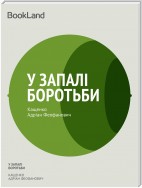Adrian Kashchenko

Adrian Kashchenko (Ukrainian: Адріан Феофанович Кащенко) (19 September 1858 - 16 March 1921) was a well-known Ukrainian writer, historian of Zaporozhian Cossacks.
Adrian Kaschenko was born in the family of small landowner claiming its roots to the Zaporozhian Cossacks in Yekaterinoslav Governorate (modern Dnipropetrovsk Oblast). Sharing the amongst nine siblings one of whom Mykola Kaschenko - would become a Ukrainian academician and the founder of Kiev Botanical Gardens. Adrian studied several years in gymnasium and military college, served as a small rank officer. Not finding himself in military career, A.Kaschenko became a clerk in the railway department, married and settled in Yekaterinoslav for some time. During his railway service Kaschenko was transferred to Perm, Saint-Petersburg, Tuapse and back to Yekaterinoslav. Although he was married, his wife later left, though she remained financially dependent on him.
Kaschenko wrote both documentary and fiction stories about life of Zaporozhians and their environment. Among them short stories "Zaporozhska slava" ("Zaporizhian fame"), "Na ruinakh Sichi" ("On the ruins of Sich"), "Mandrivka na porohy" ("Trip to the sills"). At stories "Z Dnipra na Dunai" ("From Dnieper to Dunai"), "Zruinovane gnizdo" ("Ruined nest") where he attempted to show the negative aspects following the break-up of the Zaporozhian Host. Several documentary portraits of Cossack leaders were created: "Nad Kodatskim porohom" ("Under the Kodak sill") about Hetman Ivan Sulima, "Hetman Sahaidachny", "Kost Hordienko-Holovko - last knight of Zaporizhia".
Most of Adrian Kaschenko works were published in 1917 - 1919, during the epoch of Ukraine after the Russian Revolution and Ukrainian People's Republic (previous attempts did not gain wide publication due to the censorship in the Russian Empire). At that time Kaschenko took part in the Ukrainian Prosvita ("Enlightenment") society activities and even founded his own publishing house. Sudden illness and subsequent death in 1921 put an end to his scientific and public career.
Printing of Kaschenko stories was only renewed after Ukraine became independent.
 čeština
čeština Deutsch
Deutsch français
français magyar
magyar polski
polski русский
русский English
English Azərbaycan
Azərbaycan беларуская
беларуская italiano
italiano ქართული
ქართული қазақ
қазақ Nederlands
Nederlands português
português slovenčina
slovenčina español
español 中文
中文 українська
українська




















